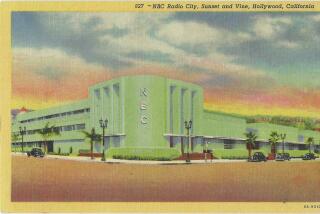Tribune Co. Will Buy KTLA for $510 Million : Price Highest Ever for TV Station; Deal Expected to Force Firm to Sell Daily News in Van Nuys
In a deal that will alter the shape of major media ownership in Southern California, Tribune Co., which owns the Chicago Tribune and the New York Daily News, said Thursday it has agreed to buy KTLA Channel 5 here for $510 million cash, the highest price ever paid for a single TV station.
The sale is expected to force Tribune Co. to sell its Van Nuys-based Daily News, a 145,000-circulation newspaper, and position the company as a new player in the race to build a national network of independent television stations.
The Federal Communications Commission said Thursday that its rules against cross-ownership of media would bar Tribune Co. from owning both the Daily News in Van Nuys and KTLA because they are in the same market, and that chances of its winning an exemption to the rules are “very slim.”
2 Cable TV Firms
James McKinnery, chief of the mass media bureau at the FCC, said Tribune Co. also must sell two cable television systems in Southern California, in Lakeland Village and in Lancaster, which have a total of 39,000 subscribers.
The expected sale of the Daily News comes as it has been attempting to expand its readership and advertising base under Tribune Co. ownership.
Since the company bought it in 1973, the paper has grown from a four-day-a-week local publication given away to Valley residents to a daily with paid circulation of more than 145,000 as of March 31.
Analysts speculated that the paper would likely be bought by another major media chain, but a rumor that Atlanta-based Cox Communications is interested was flatly denied by a company spokesman. Tribune Co. bought KTLA from Golden West Television, the investor group that acquired the station for $245 million just three years ago from former cowboy star Gene Autry.
Founded by Paramount Pictures in 1947 as the first TV station west of the Mississippi, KTLA is considered the most profitable non-network television station in the country. Its revenues last year were $90 million, with profits of roughly $30 million.
When added to Tribune Co.’s five other TV stations, KTLA will make the company the fourth-largest owner of television outlets in the country--in terms of revenues, earnings and households reached--just behind the three commercial networks.
Although some industry analysts thought the price was a bit high, most praised the deal.
“It is such a natural fit (that) if anybody else had bought KTLA, the question would have been why didn’t Tribune Co.,” said Edward Atorino, a media industry analyst with the New York brokerage firm of Smith Barney.
“It gives them the triple crown,” another analyst said. “New York, Los Angeles and Chicago, the Nos. 1, 2 and 3 markets in the country.” Tribune Co. already owns WGN-TV in Chicago and WPIX-TV in New York, as well as KWGN-TV in Denver, WGNX-TV in Atlanta and WGNO-TV in New Orleans.
Syndicated Programming
Ownership in the top three markets, analysts said, will help Tribune Co. sell advertising and attract the most popular syndicated programming, which is becoming increasingly expensive.
Perhaps more important, owning KTLA--with its nine sound stages in Hollywood once owned by Warner Bros.--also puts Tribune Co. in a position to develop an ad hoc network of its own, linking it through Tribune-produced programming with other independent stations.
With the FCC relaxing rules on the number of stations one company may own and cable television eroding the viewership of network programming, many media industry analysts consider this the most important new prospect in the future of television.
Only last week, Australian media magnate Rupert Murdoch and Denver oilman Marvin Davis announced their intention to buy six television stations from Metromedia, including KTTV-TV Channel 11 in Los Angeles, apparently with the hope of linking them with other stations into a fourth network, via programming from their 20th Century Fox studios.
However, entertainment industry officials were skeptical Thursday that Tribune Co. or Murdoch and Davis would be able to develop a network that would offer original programming throughout the day or link enough stations to reach every major market in the country.
Believed Not Viable
Lawrence Gershman, president of the television group of MGM/UA Entertainment Co., said he doesn’t believe that a fourth full-time TV network is “viable at this particular time.”
The cost of servicing a network and producing “12 or 9 or 5 hours a day” of programming “makes it extremely difficult to maintain an audience,” Gershman said.
However, he said that a limited network, supplying programming on a part-time basis, could be successful. Analysts predicted that as companies with the resources and programming capability of Fox or Tribune Co. enter the fray, original programming of a much higher quality and in much greater quantities could become available for independent stations.
Already such independent producers as Operation Prime Time have offered limited amounts of programming to independent stations--usually mini-series or specials--that have sometimes drawn higher ratings than their network competition.
Tribune Co. already has experience in programming. It produced the made-for-TV movie “Nadia,” which aired during the Olympics, and is involved in producing programs aimed at women and oriented for afternoon time periods.
Tribune Co. also has the resources to back serious programming, analysts said. The company had revenues of $1.8 billion last year and profits of $188 million.
Its broadcasting operations had revenues of $282 million and operating pretax profits of $47 million.
The addition of KTLA means Tribune Co. will reach 19.6% of all American homes, nearly as much as the stations owned and operated by American Broadcasting Cos., and more than the network of independents that Murdoch and Davis are acquiring.
If it receives the required FCC approval, the sale is the latest turn in KTLA’s long history, which was honored earlier this year in a monthlong retrospective at the Museum of Broadcasting in New York.
Broadcast Innovations
KTLA introduced wrestling to television, as well as boxing, Hopalong Cassidy, Steve Allen, and Lawrence Welk. The station pioneered live news broadcasting in 1949 when it aired 27 1/2 hours of uninterrupted coverage of unsuccessful attempts by volunteers to rescue a little girl named Kathy Fiscus from a well in San Marino. It was the first station to cut commercial interruptions of movies to one segment per hour, the first station to simulcast programs in English and Spanish and the first to offer TV stereo.
It was the first to employ a helicopter in live news, and its airborne coverage of the Watts riots in 1965 won it a George Foster Peabody Award.
KTLA’s financial fortunes, like those of many independents, have been rocky. Autry bought KTLA in 1964 from Paramount for $12 million. By 1970, the station was thought to be a losing venture and Autry came close to selling it to public television station KCET Channel 28.
The balance sheet improved greatly, however, under the management of former CBS-TV President John Reynolds, and current President Anthony Cassara.
When Autry sold KTLA in 1982 to Golden West Television in a leveraged buy-out for $245 million, the package included a TV production company and a pay-TV service in Dallas. The Golden West group consisted of KTLA executives including Cassara, among others, and was formed by the New York investment firm of Kohlberg, Kravis, Roberts & Co.
Cassara said Thursday that Golden West, which will now cease to exist, decided to sell because it thought KTLA should be part of a larger broadcast group.
Its likely sale by Tribune Co. is the latest episode in the history of the Los Angeles-area Daily News. Part IV, Page 1.
More to Read
The biggest entertainment stories
Get our big stories about Hollywood, film, television, music, arts, culture and more right in your inbox as soon as they publish.
You may occasionally receive promotional content from the Los Angeles Times.










